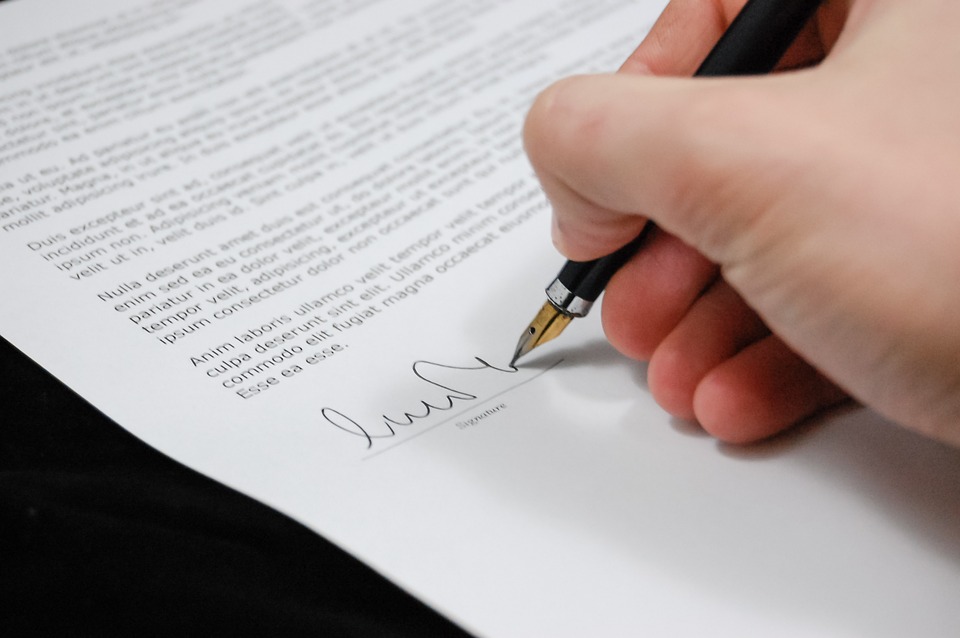Why Is a Long Island Real Property Deed So Important?
In the world of online records and electronic files, there is little to no need for paper documents and “real” signatures. In fact, the use of electronic documents is pervasive in nearly every aspect of our lives. We send applications, letters of dismissal, contracts, love letters, and photos digitally. It is the most consistent form of communication in 2018.
Despite these changes to technology and documentation, certain documents have retained an odd reverence and important. Among these dinosaurs of paper documentation are Long Island real property deeds. The deed to your property is signed at closing with pen and paper. True, this document is eventually uploaded to the auditor’s website and can even be found on other websites, but it starts as an essential piece of paper. What is so important about a Long Island real property deed and why should a Long Island lawyer look over yours before closing?
What Is a Long Island Real Property Deed?

According to the legal definition, a Long Island property deed is the instrument used to convey a piece of property from one owner to the other. This definition might make sense to a Long Island lawyer or real estate agent, but it isn’t clear to many other people trying to sell a house, buy an office building, or purchase a property from a developer. Here’s a better breakdown of the purpose and meaning of a Long Island real property deed.
A property deed is a written and signed document. In order to be enforceable and valid, the deed must be signed or executed by the seller. A buyer does not need to sign a deed, but the buyer must be named accurately and fully in the deed. This requirement means that if a property is transferred to a married couple, both spouses must be named on the deed. Likewise, if an entity takes ownership, then the entity must be accurately named on the deed.
What Else Is Necessary on a Long Island Real Property Deed?
The buyer and seller must be clearly and accurately stated on a Long Island property deed. This means the use of full names and including every party that has an interest in the property. When a piece of Long Island property is owned by several different individuals or entities, each must be named on the property deed and execute the document. If either of these requirements isn’t met the deed is invalid and there could be a title issue with the property for a future owner. When a title problem is suspected, you should speak to a real property lawyer.

As well, there must be a description of the property on the Long Island property deed. Typically this description is provided in two parts. First, on the deed will be the address, auditor’s number, and other descriptive information, such as the block, lot, and section where the property is located. Second, the deed will reference an attachment. On this attachment is another description of the property based on the measurements taken during a survey that indicates the starting point of the property’s boundary and endpoint through distances and degrees.
Finally, a Long Island real property deed must do its job – meaning the deed must have the appropriate language and signatures to effectuate a transfer.
Ensuring the Property Transfer is Effective
The essence of a Long Island deed is the conveyance of real property. The counties on Long Island impose certain requirements for a deed to ensure this purpose is met and effective.
A Long Island real property deed must contain adequate words of conveyance. Historically, real property lawyers used the word “grant” to indicate a conveyance, but this isn’t the only descriptive word that can fulfill the requirement. The standard in place by counties in Long Island is that the language must be enough to adequately transfer the property. A real property lawyer can help determine if your property deed meets this requirement.
As described earlier, a Long Island deed must also contain the signature of the seller or former owner. Execution of a Long Island real property deed makes it effective and enforceable. It is important to all parties that the seller’s signature is valid and authentic. This is the main reason deeds are still executed as paper documents. Without the seller’s signature, a deed is merely another piece of paper without any legal validity.
Value of a Long Island Deed After Conveyance

A Long island real property deed needs to be filed with the auditor’s office in the county where the property is located. Your Long Island real property lawyer should do this immediately after closing. A conveyance is still valid without filing the deed with the auditor’s office, but it isn’t part of the public record, which can lead to title issues and inconsistencies. These mistakes are costly down the road for a buyer and problematic when a subsequent conveyance arises.
After closing, a Long Island real property deed becomes a buyer’s evidence of ownership and property rights. The deed will state how and in what capacity the buyer owns the property and also gives the buyer the ability to transfer these ownership rights in the future. It is a deed’s ability to act as proof of ownership that has real value for a buyer and the reason a Long Island real property lawyer should always review your deed.
The Law Office of Samilde Perez works closely with buyers and sellers at closing. Our office reviews all documents exchanged and executed at closing and we are with you every step of the way leading up to this big day. To learn more about our real property practice contact our Long Island office at (516) 216-5060.
